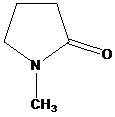
Concept explainers
Write a structural formula for the principal organic product or products of each of the
following reactions:
Propanoyl chloride and sodium propanoate
Butanoyl chloride and benzyl alcohol
 and water
and water
 and aqueous sodium hydroxide to give
and aqueous sodium hydroxide to give
 and aqueous ammonia to give
and aqueous ammonia to give
Methyl benzoate and excess phenylmagnesium bromide, then
Acetic anhydride and
Ethyl phenylacetate and lithium aluminum hydride, then
 and aqueous sodium hydroxide to give
and aqueous sodium hydroxide to give
 and aqueous ammonia
and aqueous ammonia
 and lithium aluminum hydride, then
and lithium aluminum hydride, then
 and excess methylmagnesium bromide, then
and excess methylmagnesium bromide, then
Ethyl phenylacetate and methylamine
 and aqueous sodium hydroxide to give
and aqueous sodium hydroxide to give
 and aqueous hydrochloric acid, heat to give
and aqueous hydrochloric acid, heat to give
 and aqueous hydrochloric acid, heat to give
and aqueous hydrochloric acid, heat to give
 and aqueous sulfuric acid, heat to give
and aqueous sulfuric acid, heat to give
 and
and
 and aqueous hydrochloric acid, heat
and aqueous hydrochloric acid, heat
Propanenitrile and methylmagnesium bromide, then
Interpretation:
Structural formulae of the principal organic products of the given reactions are to be written.
Concept Introduction:
As carboxylic acid derivatives contains a carbonyl group, they undergo reactions typical of carbonyl compounds.
Reactivity of carboxylic acid derivative toward nucleophilic acyl substitution depends on its structure. Acid chlorides are most reactive, followed by anhydrides, esters and amides.
The reactivity order can be explained on the basis of resonance stabilization of the carbonyl group by the acyl substituent.
Nucleophilic substitution reactions of carboxylic acid derivatives generally proceed by an addition-elimination mechanism involving a tetrahedral intermediate.
Answer to Problem 31P
Solution:




e)

f)

g)

h)

i)

j)

k)

l)

m)

n)

o)

p)

q)

r)

s)

t)

u)

v)

Explanation of Solution
a) Propanoyl chloride and sodium propanoate:
The propanoate anion acts as a nucleophile, adding to the carbonyl carbon from propanoyl chloride. Chloride is displaced in the next step, reforming the carbonyl to yield the mixed anhydride acetic propanoic anhydride.

b) Butanoyl chloride and benzyl alcohol:
The oxygen of benzyl alcohol adds to the electrophilic carbon of the carbonyl group in butanoyl chloride. Loss of the chloride and deprotonation yields benzyl butyrate.

c)
Ammonia is the nucleophile in this reaction and adds to the carbonyl carbon of

d) Succinic anhydride and water:
Succinic anhydride hydrolyzes to succinic acid

e) Succinic anhydride and aqueous sodium hydroxide to give
Succinic anhydride undergoes hydrolysis in basic aqueous conditions. The sodium salt of the acid is formed under these conditions.

f) Succinic anhydride and aqueous ammonia to give
Ammonia attacks one of the carbonyl carbons. The bond between this carbonyl and the acyl group breaks. An amide group if formed with another molecule of ammonia extracting a proton. Cleavage of the bond between this carbonyl and the anhydride oxygen results in a carboxylate group at the other end of the carbon chain. This forms an ammonium salt.

g) Methyl benzoate and excess phenylmagnesium bromide, then
Grignard reagents are good nucleophiles and attack the electrophilic carbonyl carbon in esters. A carbon-carbon bond is formed between the carbonyl carbon and the phenyl group from the Grignard reagent, phenylmagnesium bromide. Loss of methoxy group from the ester leads to initial formation of diphenyl ketone. As an excess of phenylmagnesium bromide is used, another phenyl group is added to the initially formed ketone to produce triphenylmethoxy ion. Acidic work up yields triphenyl methanol.

h) Acetic anhydride and
The alcohol acts as a nucleophile and adds to one of the carbonyl carbons from the anhydride. The loss of acyl group followed by deprotonation of alcohol oxygen yields the ester

Ethyl phenylacetate and lithium aluminum hydride, then
Lithium aluminum hydride is a source of hydride ion. It is used for reduction of a variety of functional groups including esters. The hydride functions as a strong nucleophile, and initially adds to the carbonyl carbon of the ester. The loss of ethoxy group gives

As the acetaldehyde also contains a carbonyl group, addition of a second hydride to it converts it to
j)
Lactones are cyclic esters. They undergo hydrolysis when treated with aqueous solution of bases like

k)
Ammonia molecule adds to the carbonyl carbon, and forms an amide group on deprotonation. The ester bond breaks, forming an alkoxy group at the other end of the carbon chain. Protonation of this forms an alcoholic

l)
Lithium aluminum hydride reduces lactones to diols. A hydride ion adds to the carbonyl carbon of the lactone. Breaking of the ester

Acidic work up converts this into
m)
Like open chain esters, lactose also reacts with two moles of Grignard reagent per mole lactone. Because a lactone is in internal, cyclic ester, a diol is formed instead of two molecules of alcohol. The reaction starts with the methyl group from the Grignard reagent adding to the carbonyl carbon. This results in breaking of the lactone ring, with a ketone group at one end and an alkoxy group at the other end of the carbon chain. The ketone group reacts with another molecule of methylmagnesium bromide and is converted to a secondary alcohol on acidic work up. Therefore, this reaction gives the product

n) Ethyl phenylacetate and methylamine (
This reaction alo is addition-elimination, resulting in the formation of an amide and an alcohol. Methyl amine acts as a nucleophile and adds to the carbonyl carbon of the ester. Loss of the ethoxy group, and deprotonation of the protonated amide yields

o)

p)
Lactams are poor electrophiles because of the planar,
Therefore, the product of the reaction is the hydrochloride of

q)
Acid hydrolysis of an amide results in the formation of a carboxylic acid and an amide (as amide hydrochloride). The amide group is activated by protonation of the oxygen. Addition of water molecule to the carbonyl carbontakes place. Subsequent proton transfers and breaking of the amide bond yields acetic acid and aniline hydrochloride.

r)
Acidic hydrolysis of

s) Cyclopentanecarboxamideand
The reaction starts with the nucleophilic oxygen of amide attacking the phosphorus atom. Another oxygen bonded to this phosphorus deprotonates the amine group, with the bond pair moving to form the nitrile triple bond. The remaining proton attached to the nitrogen is extracted by another of the negatively charged oxygens in phosphorus pentoxide to give the product.

t)
Acid hydrolysis of nitriles is reverse reaction of the synthesis of nitrile from an amide. Under acidic conditions, the nitrile is initially hydrolyzed to an amide. The amide undergoes further hydrolysis to a carboxylic acid and ammonium salt.

u)
Hydrolysis of nitrile initially forms an amide, with the hydroxide attacking the nitrile carbon. The amide formed undergoes further hydrolysis to form the carboxylate salt and ammonia.

v) Propanenitrile and methylmagnesium bromide, then
The strongly basic methylmagnesium bromide attacks the nitrile carbon, forming an imine on protonation of the nitrogen. Imine then undergoes hydrolysis to ketone and ammonia.

Want to see more full solutions like this?
Chapter 20 Solutions
ORGANIC CHEMISTRY-PACKAGE >CUSTOM<
Additional Science Textbook Solutions
Genetic Analysis: An Integrated Approach (3rd Edition)
Chemistry: Structure and Properties (2nd Edition)
Campbell Biology (11th Edition)
Organic Chemistry (8th Edition)
Human Biology: Concepts and Current Issues (8th Edition)
- Acetylene reacts with sodium amide in the presence of propyl halide produces aldehyde produces ketones It produces 2-pentanearrow_forwardAccount for the fact that treating propenoic acid (acrylic acid) with HCl gives only 3-chloropropanoic acid.arrow_forwardFollowing is the structural formula of the tranquilizer meparfynol (Oblivon). Propose a synthesis for this compound starting with acetylene and a ketone. (Notice the -yn- and -ol in the chemical name of this compound, indicating that it contains alkyne and hydroxyl functional groups.)arrow_forward
- Claisen condensation between diethyl phthalate and ethyl acetate followed by saponification, acidification, and decarboxylation forms a diketone, C9H6O2. Propose structural formulas for compounds A and B and the diketone.arrow_forwardDimethyl disulfide, CH,S–SCH3, found in the vaginal secretions of female hamsters, acts as a sexual attractant for the male hamster. Write an equation for its synthesis from methanethiol.arrow_forwardWe have studied Fischer esterification, in which a carboxylic acid is reacted with an alcohol in the presence of an acid catalyst to form an ester. Suppose that you start instead with a dicarboxylic acid such as terephthalic acid and a diol such as ethylene glycol. Show how Fischer esterification in this case can lead to a macromolecule with a molecular weight several thousand times that of the starting materials. HO, OH poly(ethylene terephthalate) (РET) НО HO, 1,4-Benzenedicarboxylic acid (Terephthalic acid) 1,2-Ethanediol (Ethylene glycol) the material produced in this reaction is a high- molecular-weight polymer, which can be fabricated into Mylar films and into the textile fiber known as Dacron polyester.arrow_forward
- Following is the structural formula of the tranquilizer meparfynol (Oblivon). Oblivon HO Propose a synthesis for this compound starting with acetylene and a ketone. (Notice the -yn- and -ol in the chemical name of this compound, indicating that it contains al- kyne and hydroxyl functional groups.)arrow_forwardThe ketone 2-heptanone has been identified as contributing to the odor of a number of dairy products, including condensed milk and cheddar cheese. Describe the synthesis of 2-heptanone from acetylene and any necessary organic and inorganic reagents.arrow_forwardWrite the structure of following organic compoundarrow_forward
 Organic ChemistryChemistryISBN:9781305580350Author:William H. Brown, Brent L. Iverson, Eric Anslyn, Christopher S. FootePublisher:Cengage Learning
Organic ChemistryChemistryISBN:9781305580350Author:William H. Brown, Brent L. Iverson, Eric Anslyn, Christopher S. FootePublisher:Cengage Learning Introduction to General, Organic and BiochemistryChemistryISBN:9781285869759Author:Frederick A. Bettelheim, William H. Brown, Mary K. Campbell, Shawn O. Farrell, Omar TorresPublisher:Cengage Learning
Introduction to General, Organic and BiochemistryChemistryISBN:9781285869759Author:Frederick A. Bettelheim, William H. Brown, Mary K. Campbell, Shawn O. Farrell, Omar TorresPublisher:Cengage Learning


